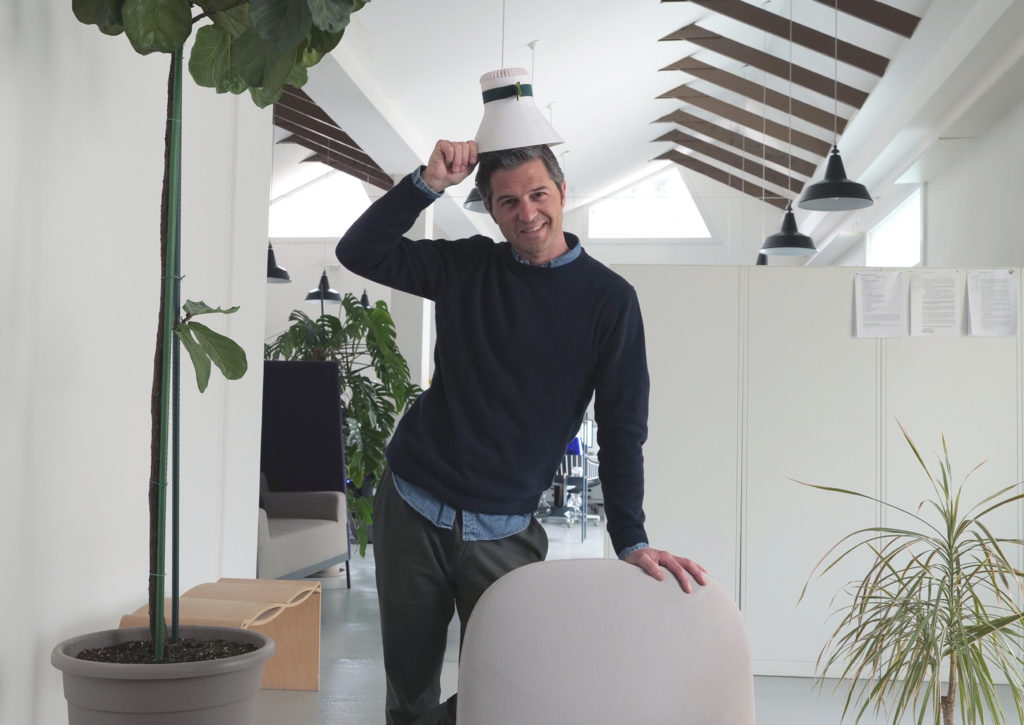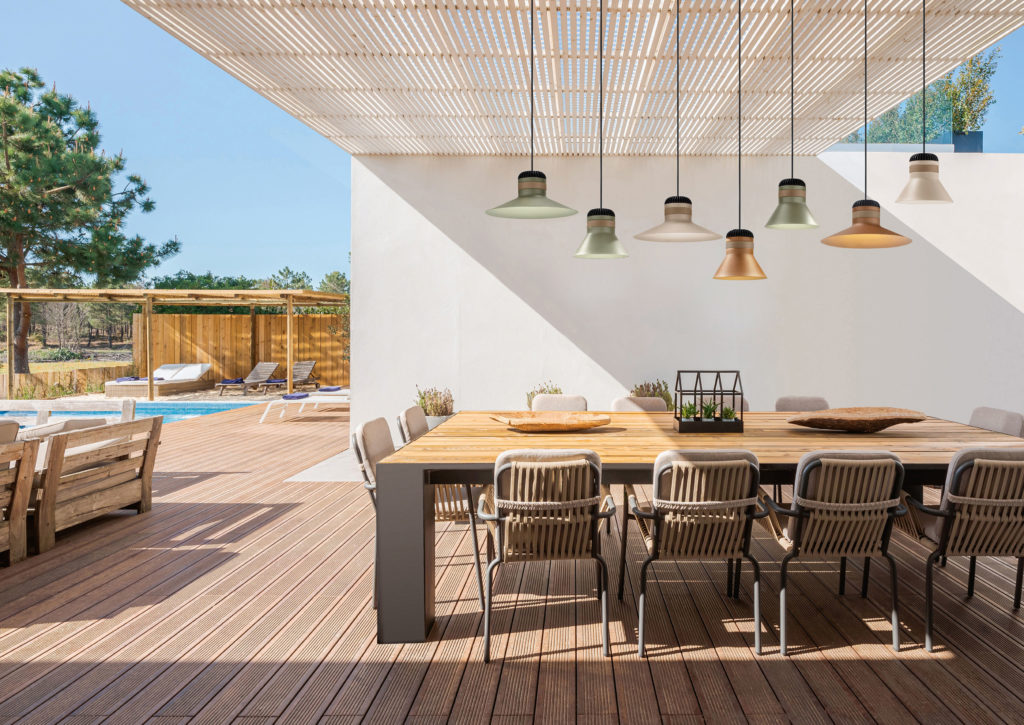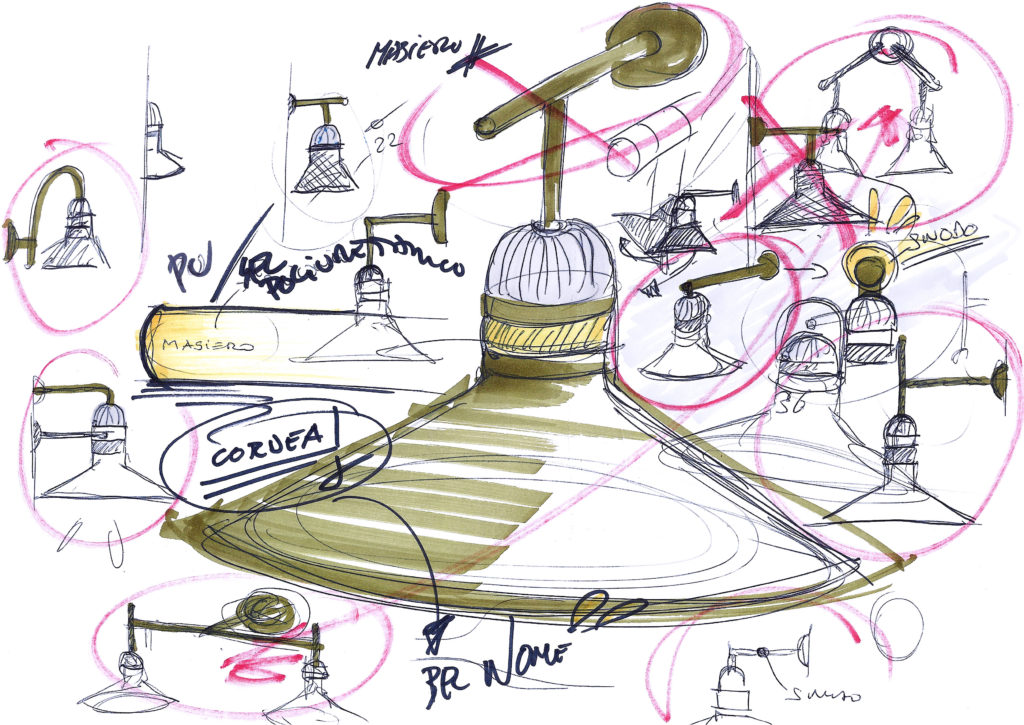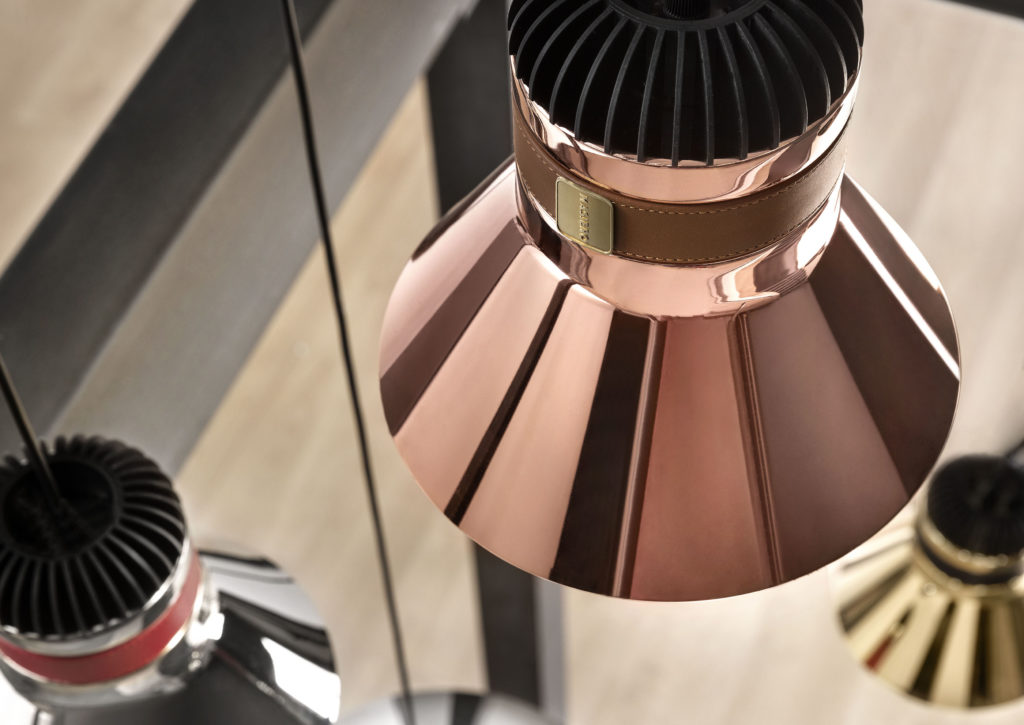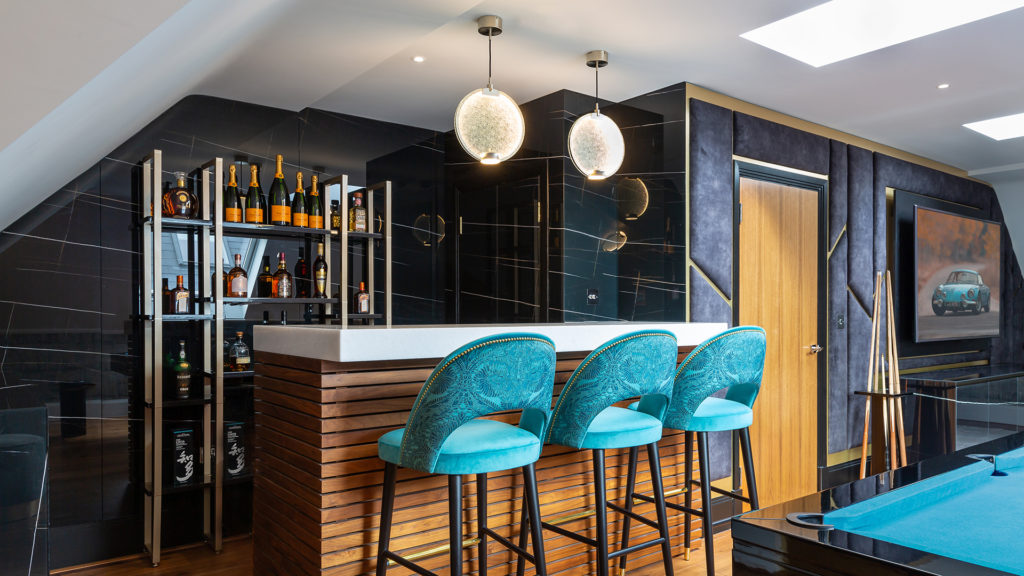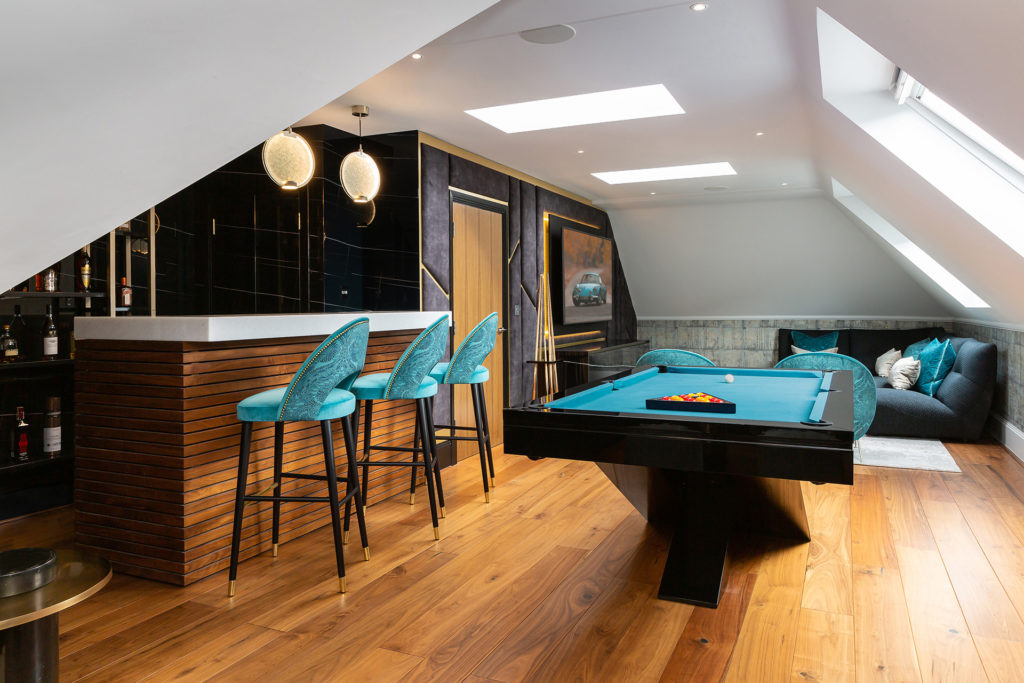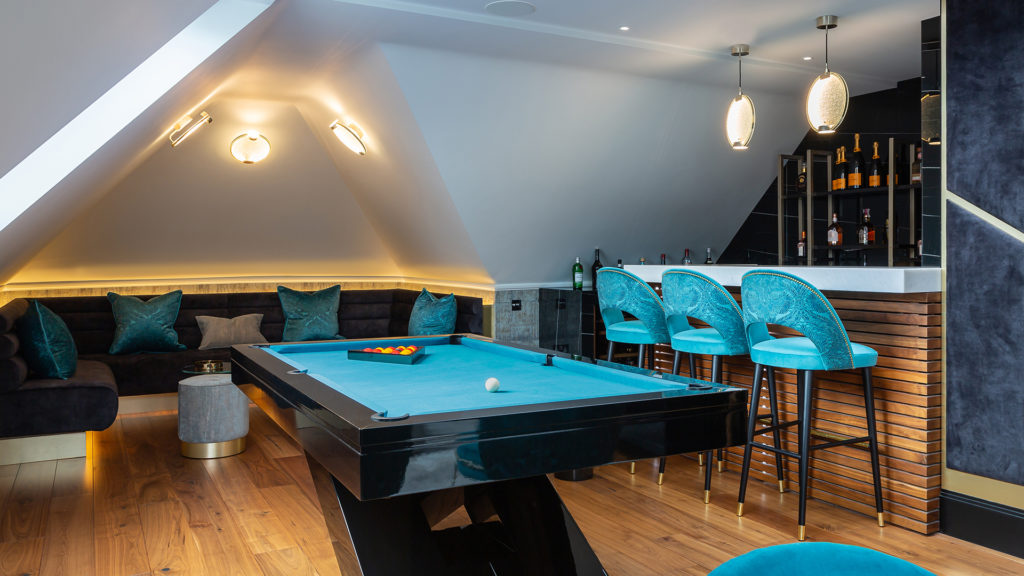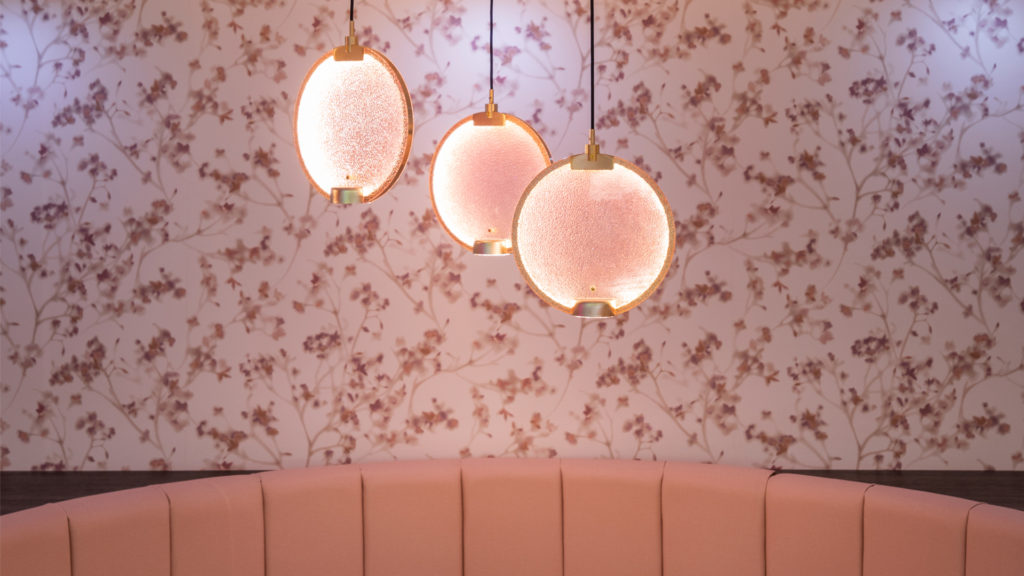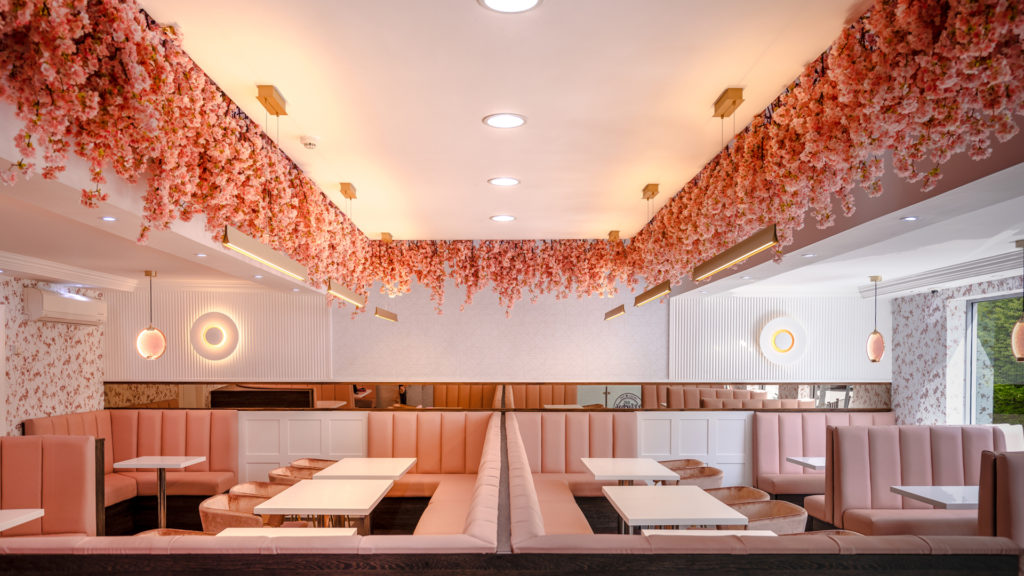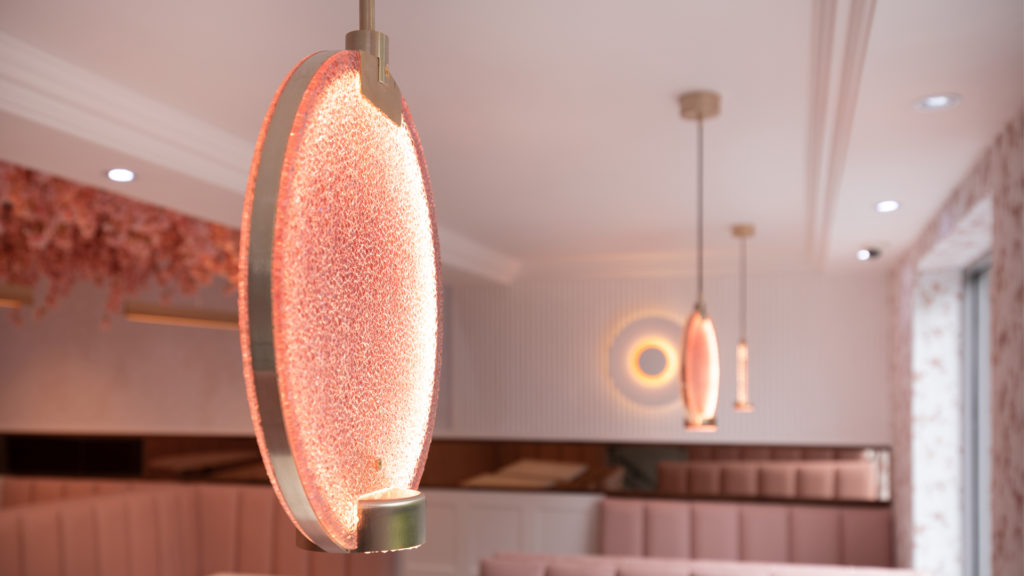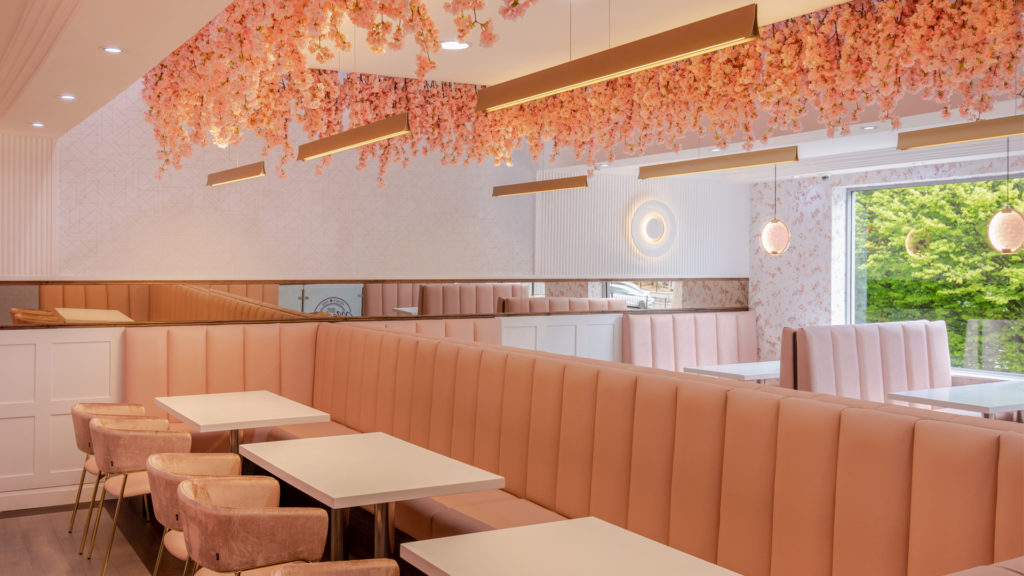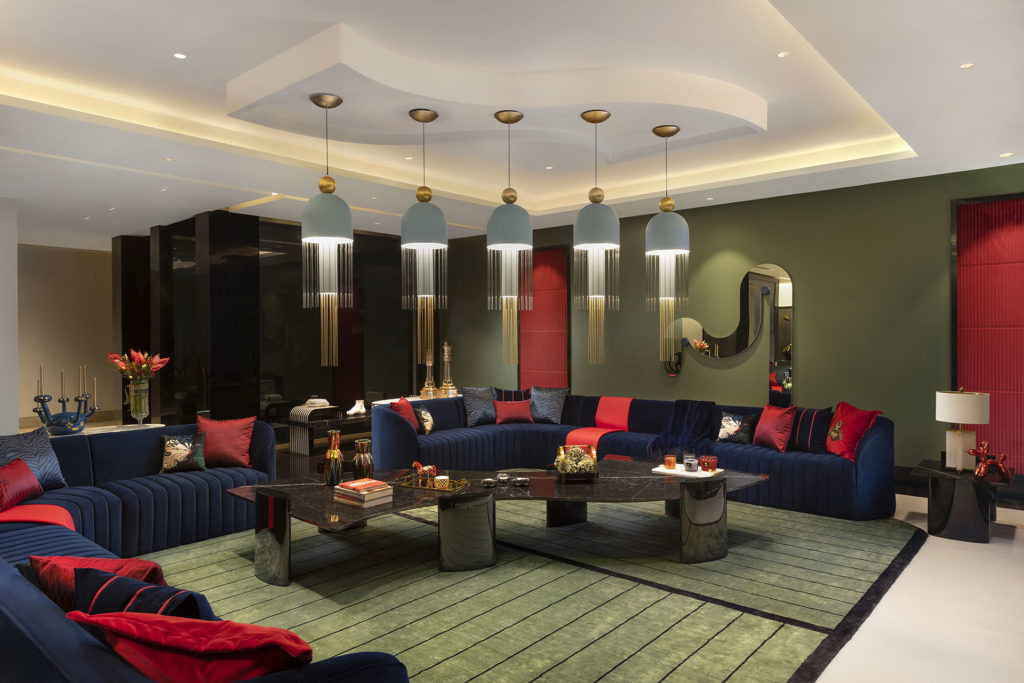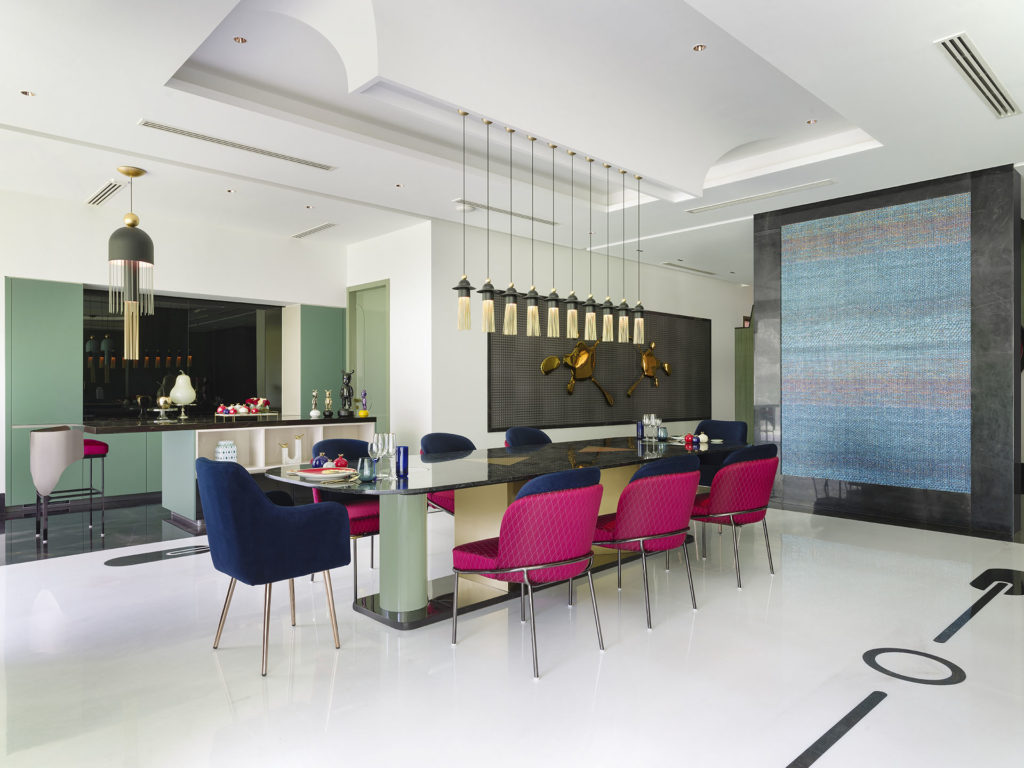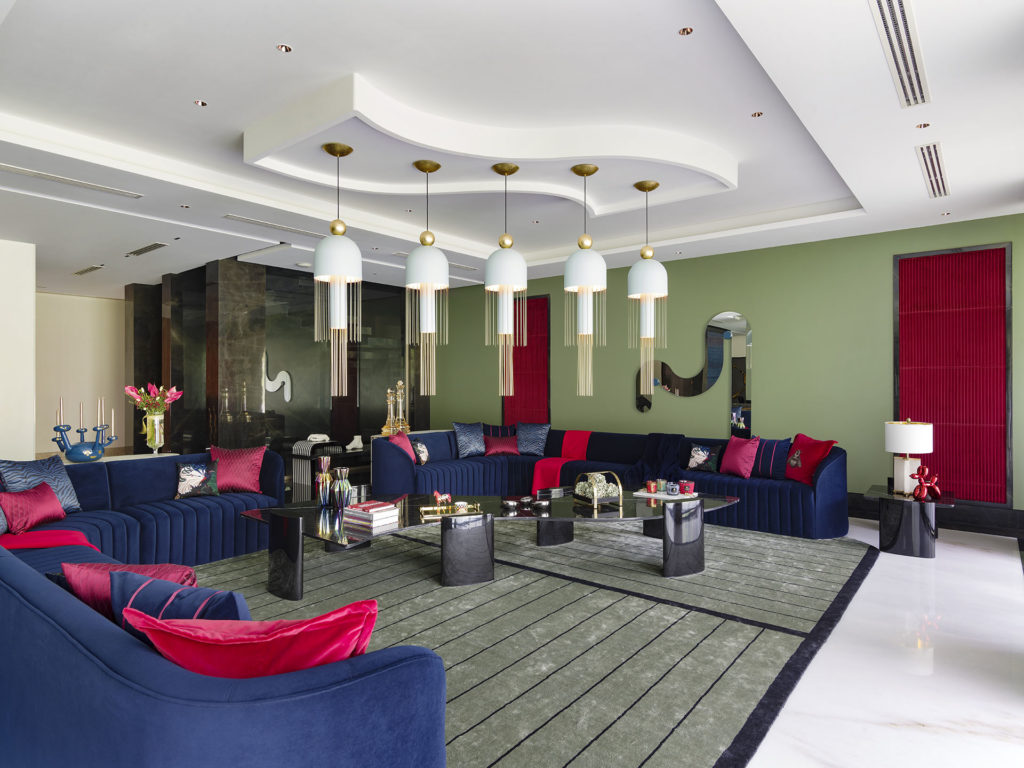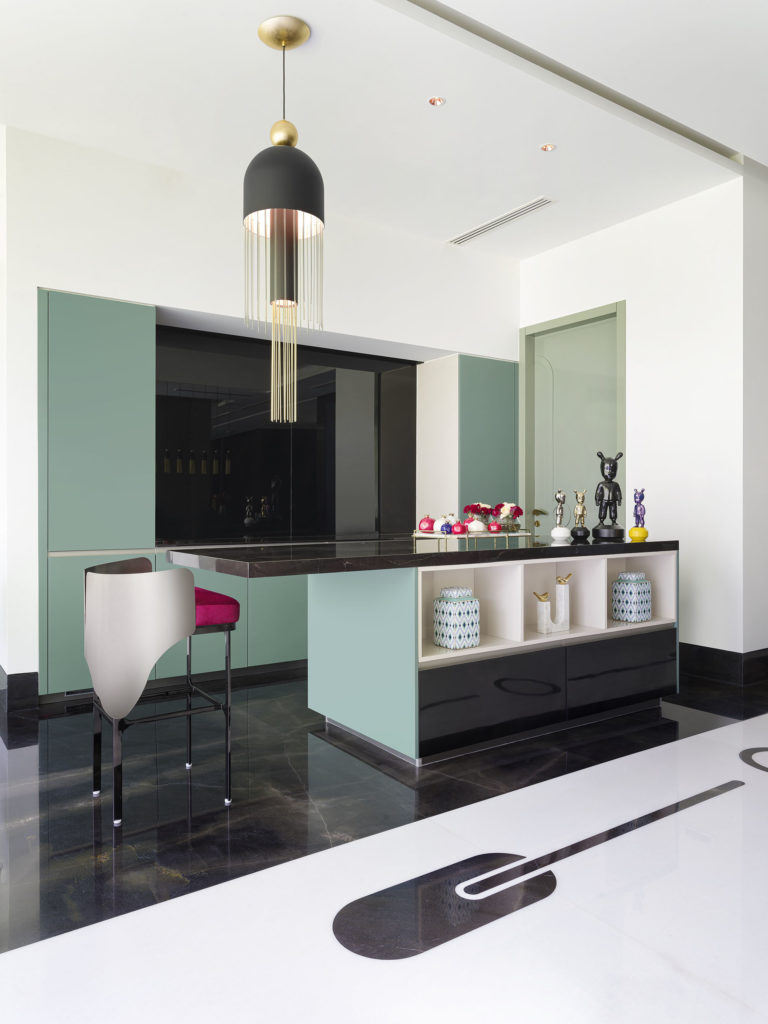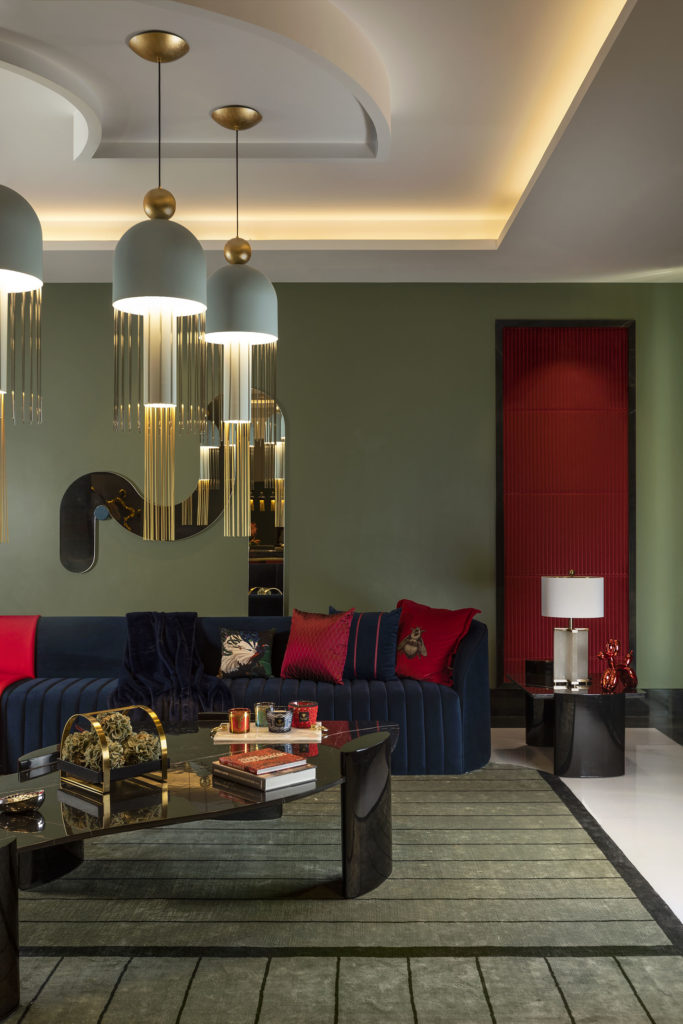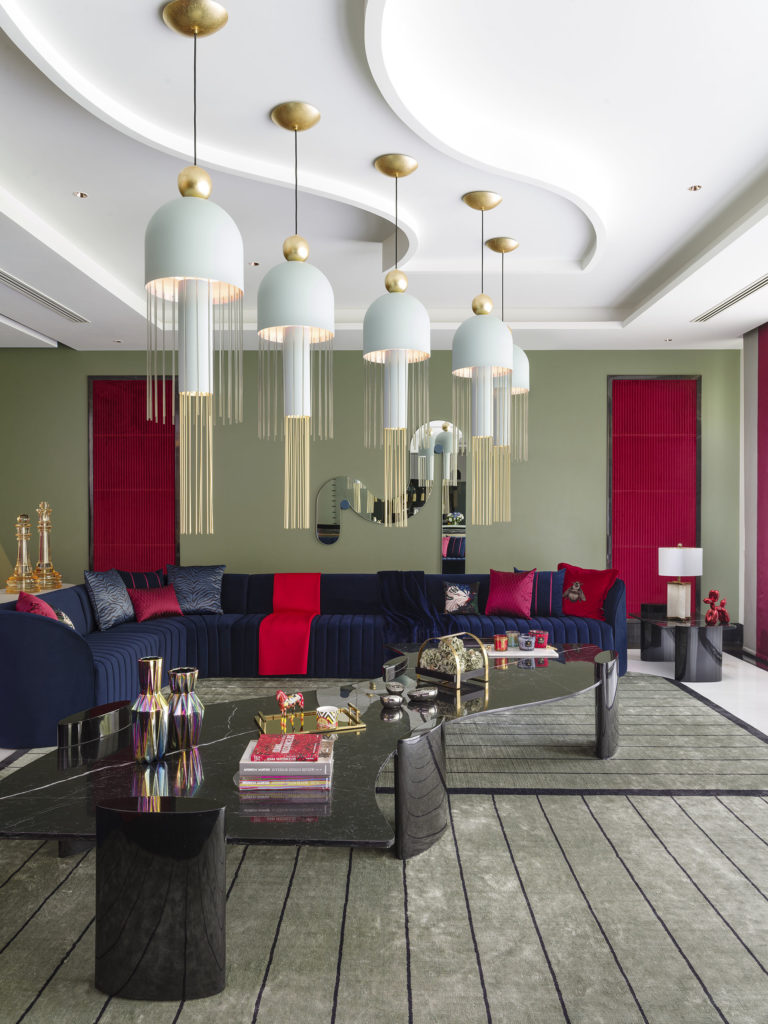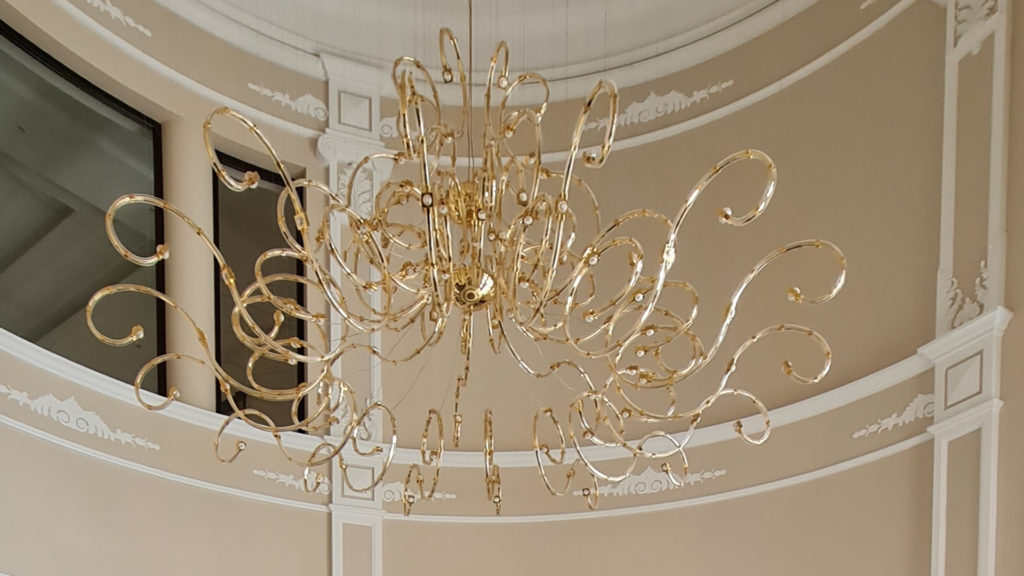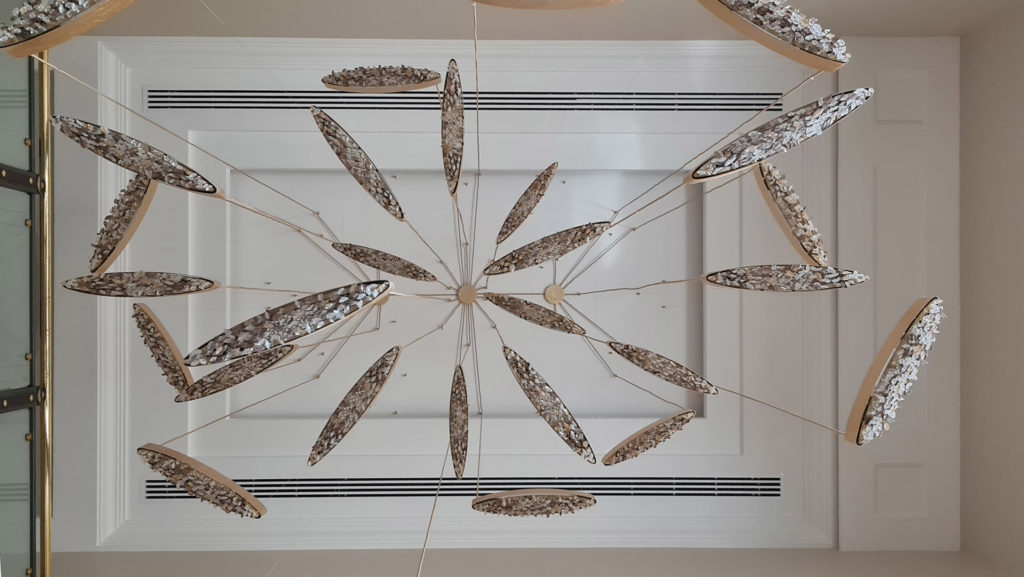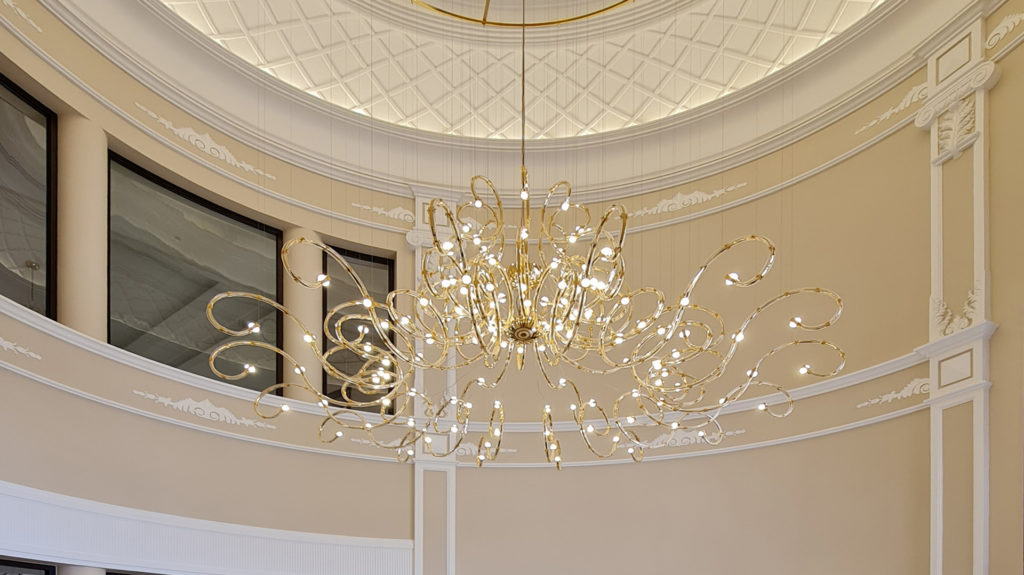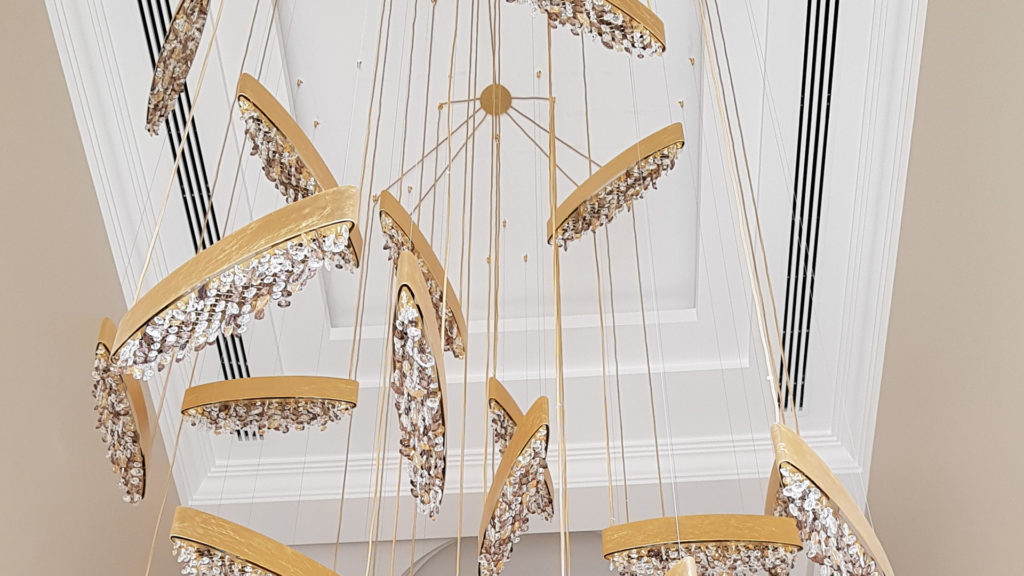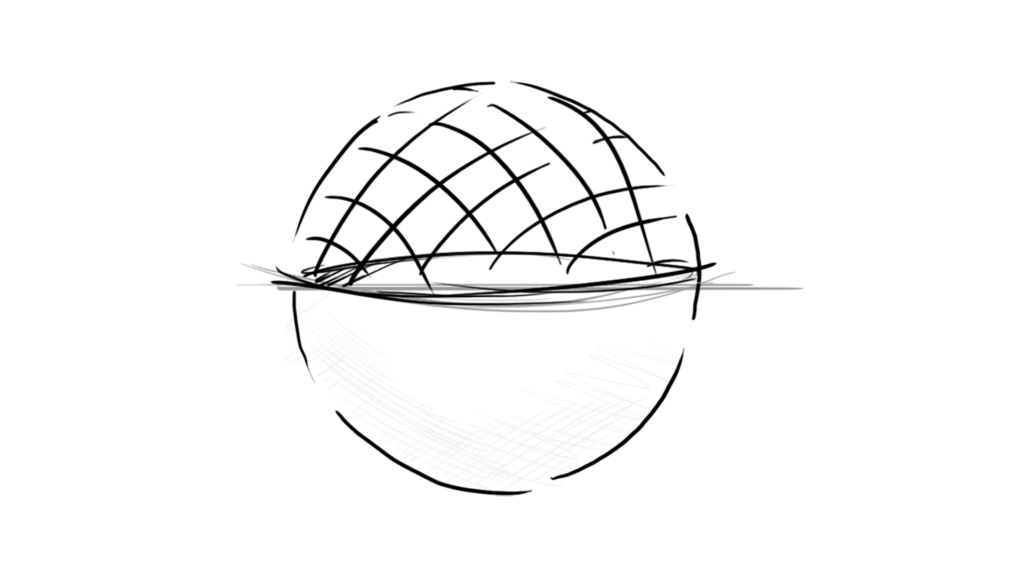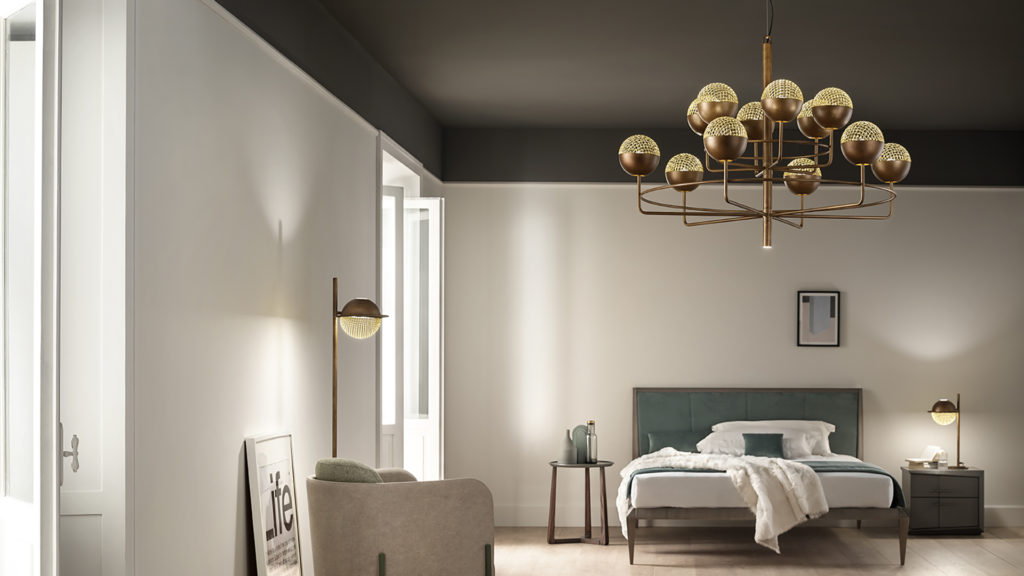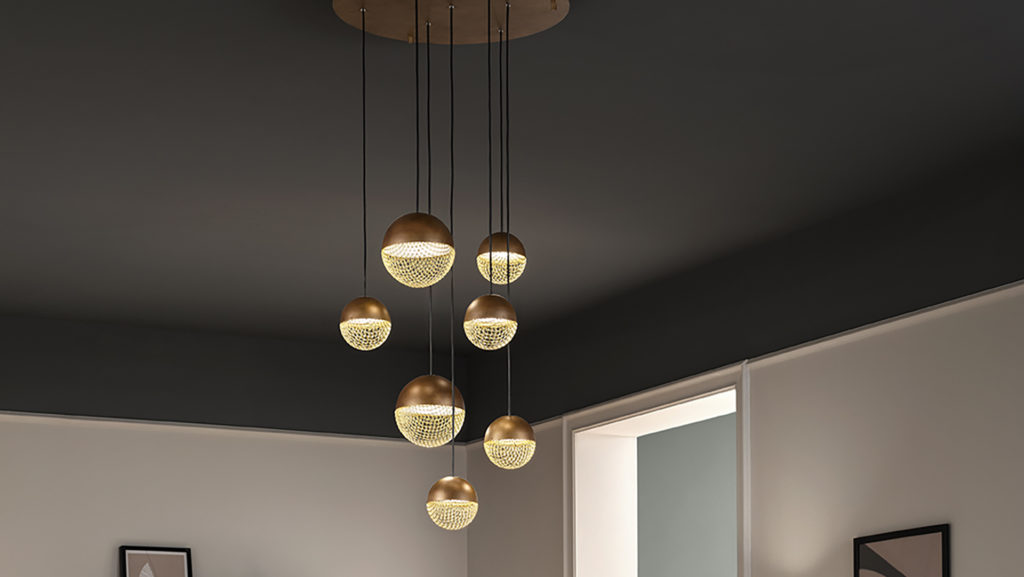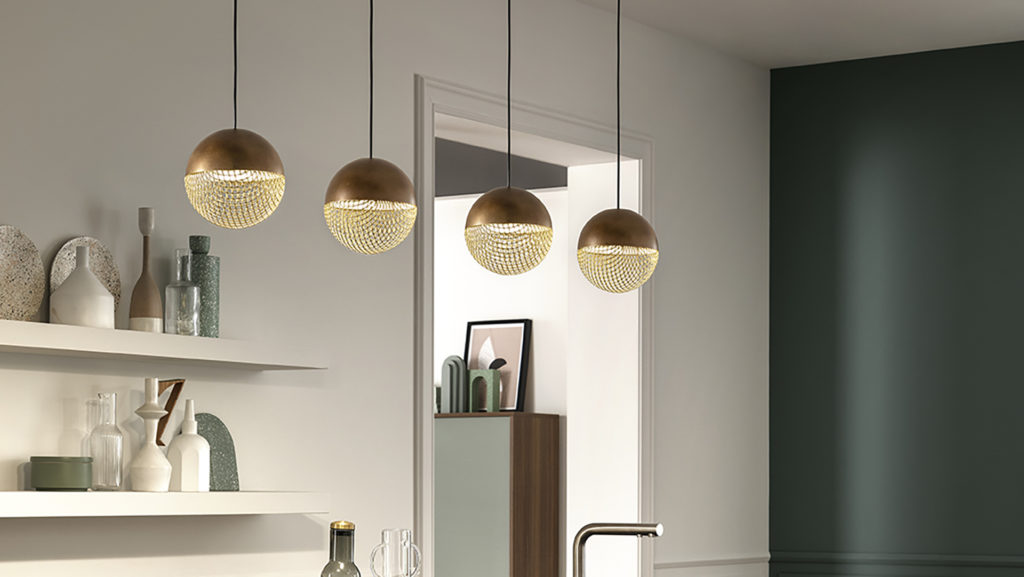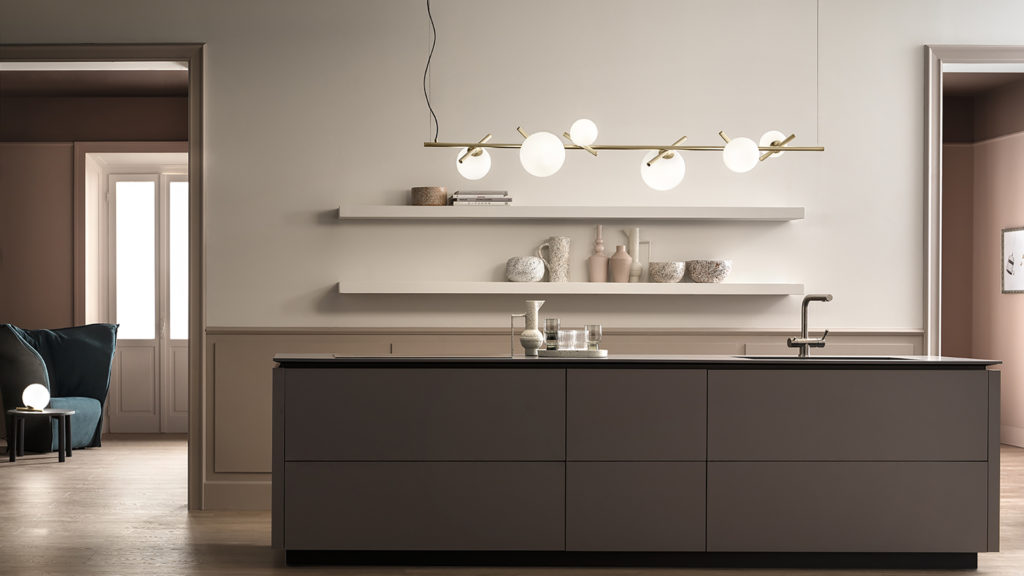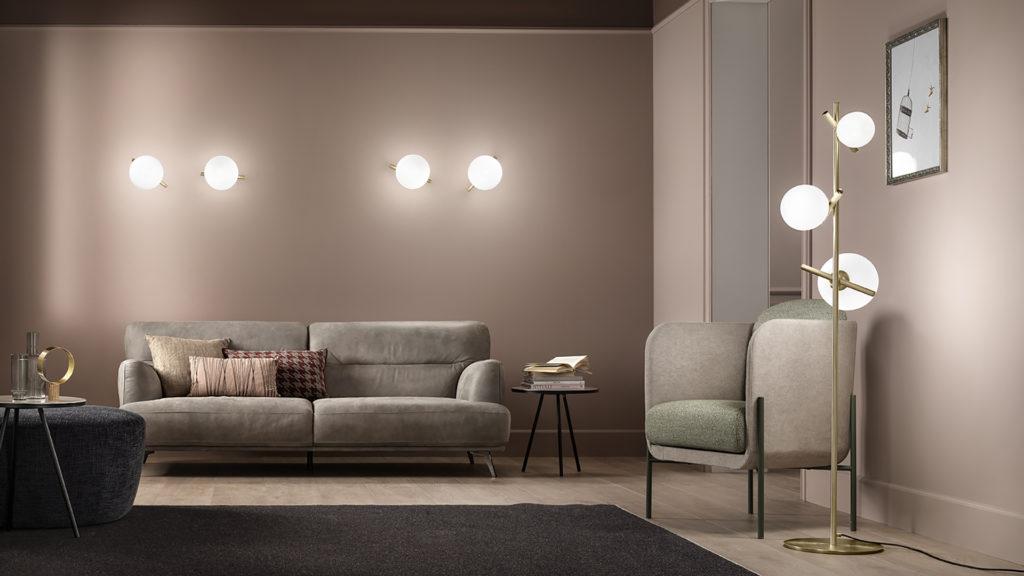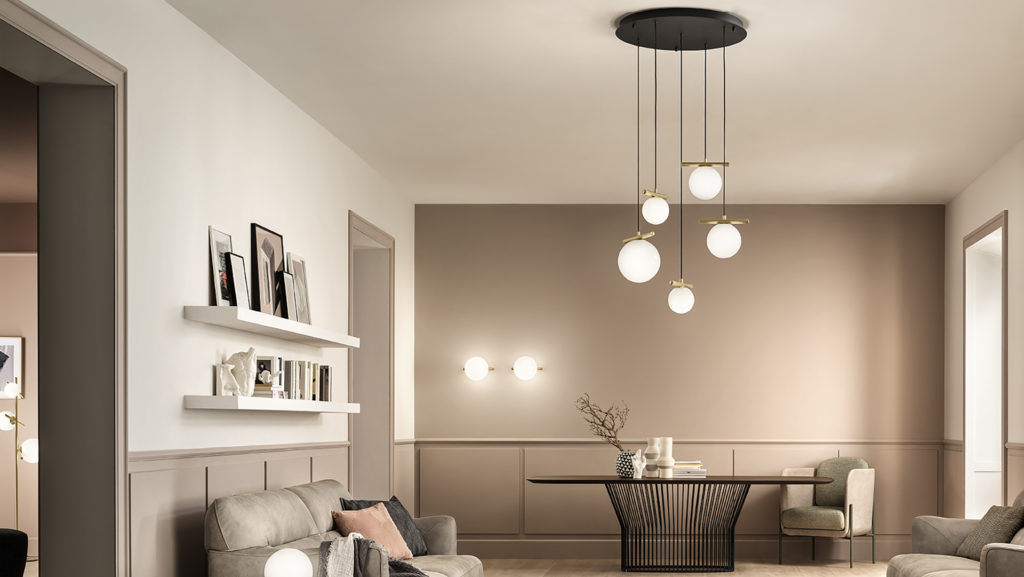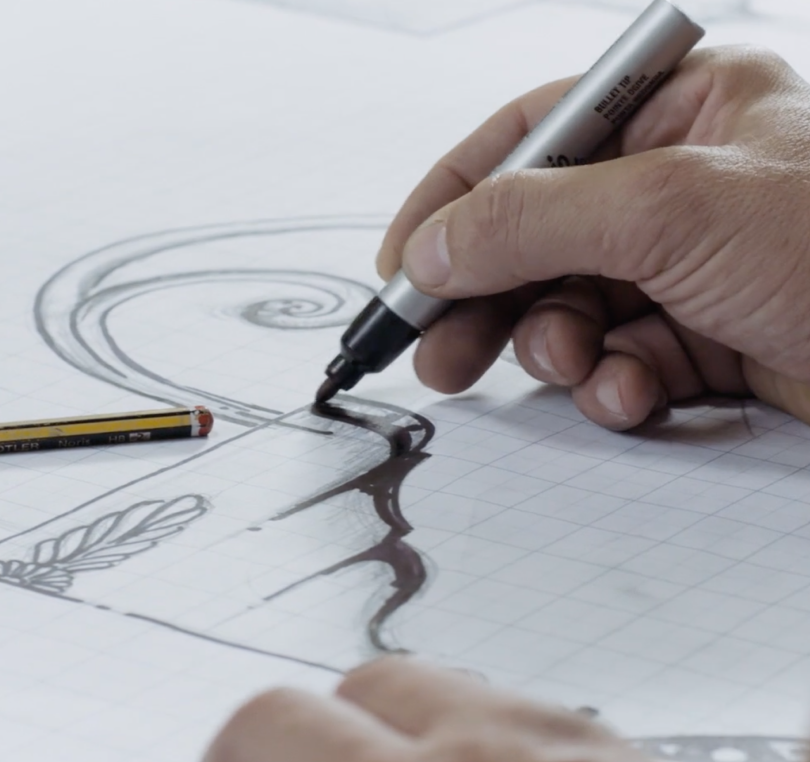Valerio, where did inspiration come from in the creation of this collection? Where did his name come from?
Tee was born from the meeting of my personal values as a designer together with those of the Masiero Company.
As my habit, I wanted an elegant and long-lasting designer because I don’t like “fads” and I think good design should be able to age without any hurry. I also wanted the clean and simple shapes that I love to contain a degree of expressiveness and emotion that I recognize in Masiero DNA and that I thought should be offered to his customers.
From the point of view of the composition of the project, I wanted to pursue extremely clean geometries, using primitives such as cylinders and spheres joined by revolutionary solids. On this formal basis I built a very careful and patient dialogue of proportions and then I wanted the light to make the spheres that contain it vibrate: sinuous ripples engraved on the lampshade are lit when crossed by light and create a measured decoration, but I find it very attractive. In the lighting sector I believe that light must always be the true protagonist and for this reason I wanted it was the light that made the project unique.
Another element that guided the development of the project was the desire to be able to build in an almost modular way a very complete family of lighting fixtures. Almost every architectural space can find a suitable TEE lamp. The name of the collection is perhaps a way of not taking yourself too seriously, with a fun wink to the shape of the TEE used in the game of golf, from the shape so similar to the union of fitting and lampshade in this family of lamps.
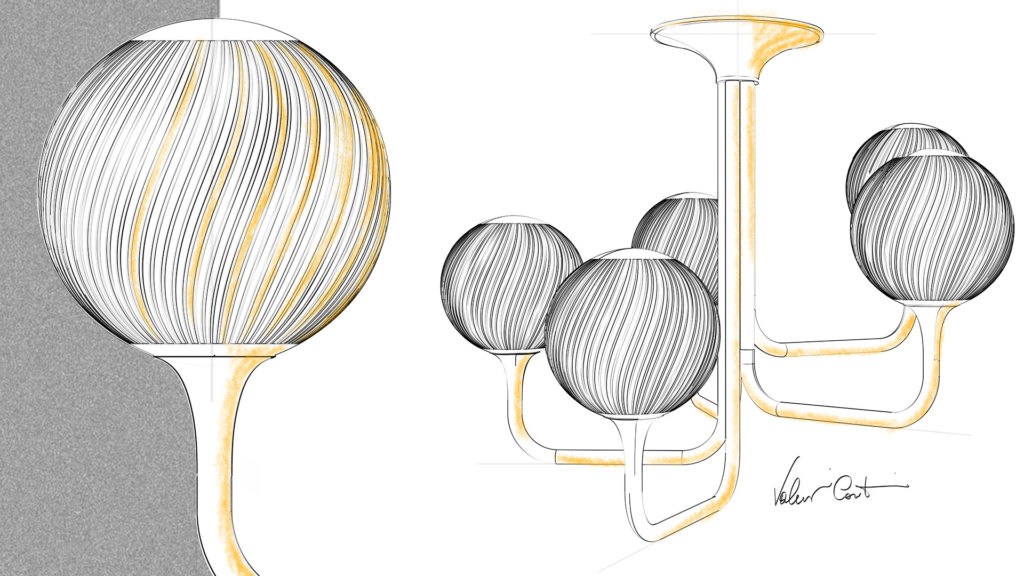
Which was the project journey? Have there been changes during the project development?
From my point of view, the project had a particularly smooth and pleasant process, without any trauma or shock. Initially we had developed three different families and the one that later became the TEE family immediately caught the interest of the Company.
Starting from the first approval, has been a succession of interaction between designer and company to grow the collection and bring it to become that large range for indoor and outdoor that today TEE is.
My study is particularly inclined to follow the manufacturing and technical sides of the projects we design and therefore also the dialogue with the Technical Department of the Company, accomplices competence and willingness to dialogue of its members, was particularly pleasant and stimulating.
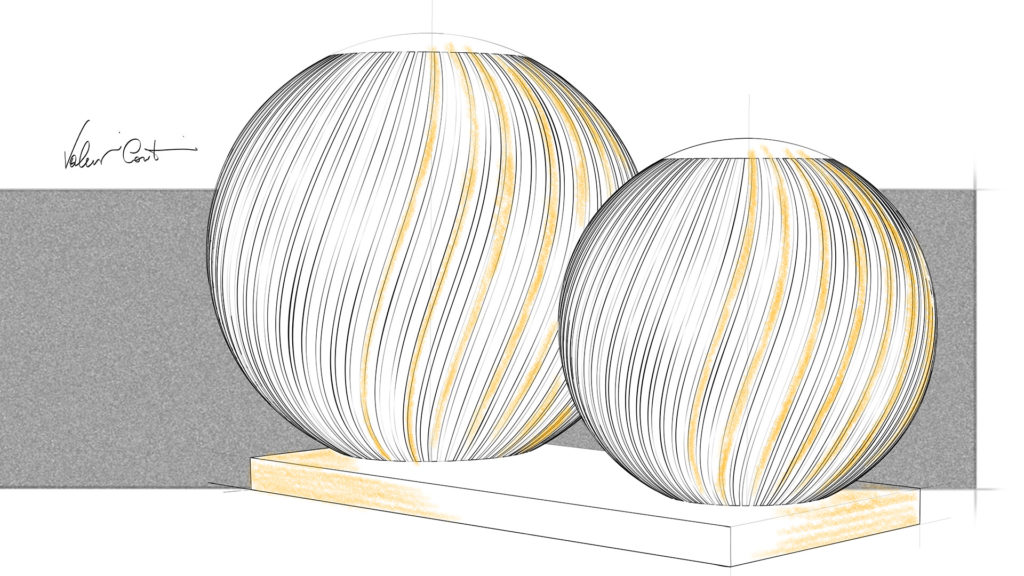
Could you describe how have you chosen materials, colors and finishes?
The choice of materials was particularly linear and linked to the function they had to express, exactly the process most pleasing to us.
The use of rotational moulding was proposed for the lampshade of the outdoor collection, aware that the undulations placed on the outside of the surface would pose a manufacturing challenge. We immediately optimized the geometry to facilitate printability and the rest was done by the capacity of the Masiero Technical department and their supplier.
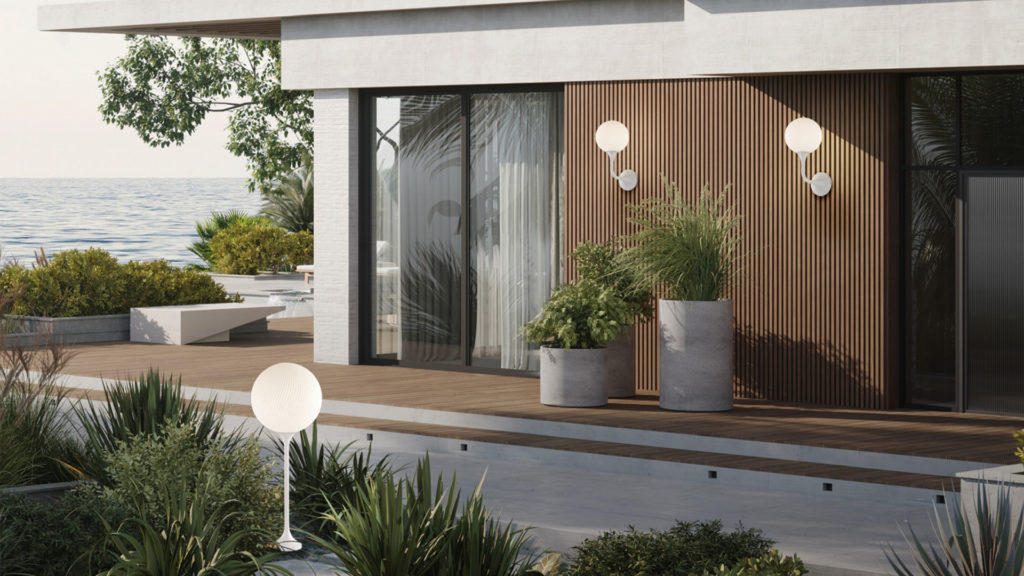
For the interior collection we have chosen glass lampshades, for the greatest preciousness and enhancement of light. The frames, in the many configurations available since launch, are made of metal, but also in this case we must thank the Company because thanks to the great technical ability in the finishes allowed us to express a valuable palette, satisfying, but also very contemporary.
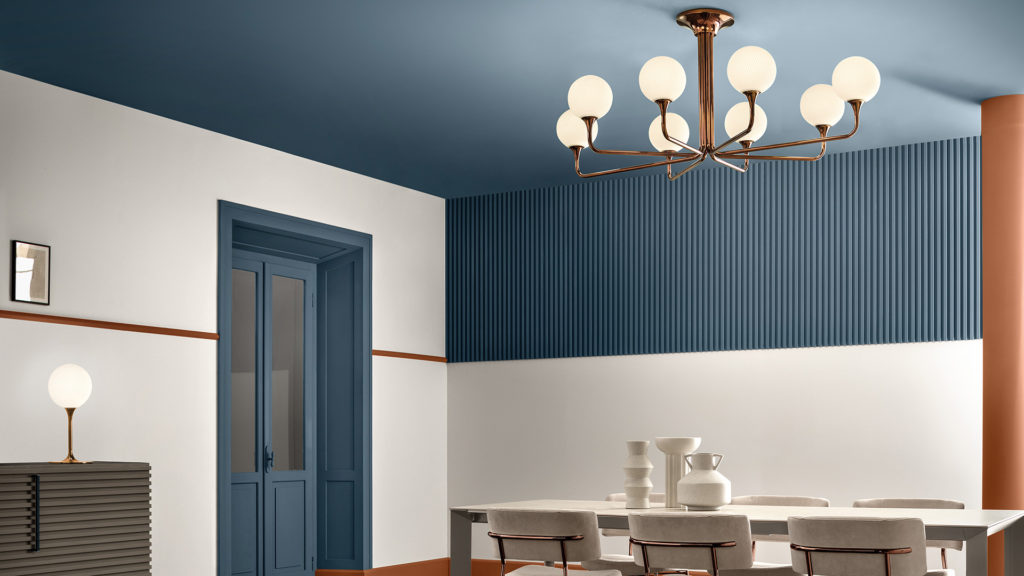
How, from your point of view, does Tee represent an evolution in the Masiero offer? What are its commercial strengths?
I hope that our contribution will be a welcome enrichment to the Masiero design alphabet. Surely our approach based on simple ideas, but very strong and executed with extreme care is appreciated by the many companies with which we collaborate, so I hope it can also be appreciated by Masiero customers. From a commercial point of view, I think it is not easy to find a family so articulated, but even more I hope that the TEE family can demonstrate its extreme versatility in being able to furnish both minimal and modern spaces, as well as classic and decorated, passing through the exterior, creating also in the garden a careful and satisfying lighting.
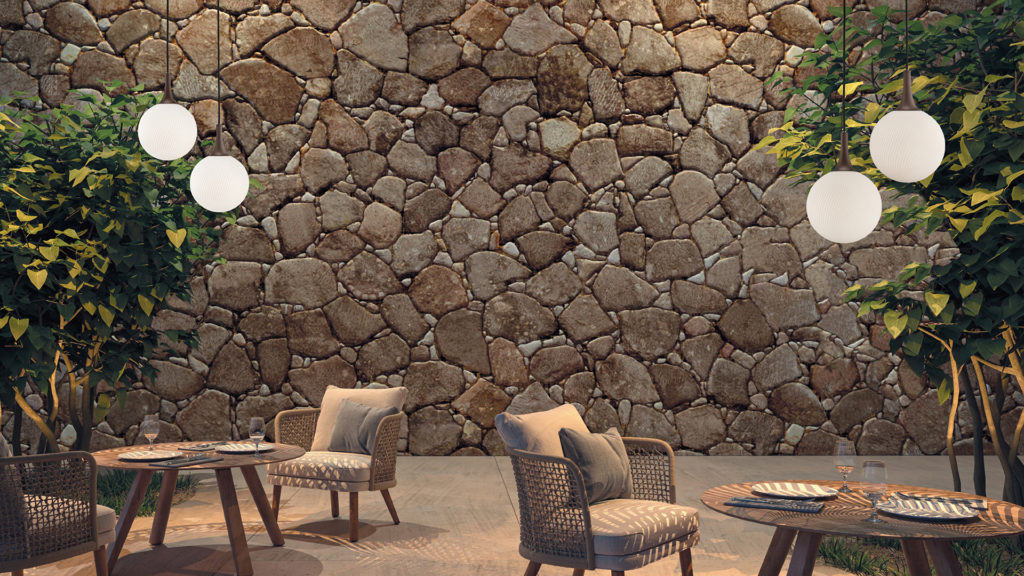
If you have to suggest Tee to architects and interior designers, what are the environments for which this collection is best suited?
I have taken a lot of time to answer this question, but in complete and sincere honesty, looking at the TEE collection for a long time, I really have a hard time imagining environments in which they can’t fit. The mix of clean shapes, almost “timeless”, but very personal, warm and contemporary finishes, graceful decoration in the light, but never become cloying, I think can seduce a refined audience, but very wide.
From the point of view of the geometries the Tee range is extraordinarily rich, so a prescriber can have fun with some small points of light on the wall, or go wild with imposing chandeliers, passing through hanging installations worthy of a hotel lobby. TEE is really an elegant alphabet at the service of architects and interior designers.
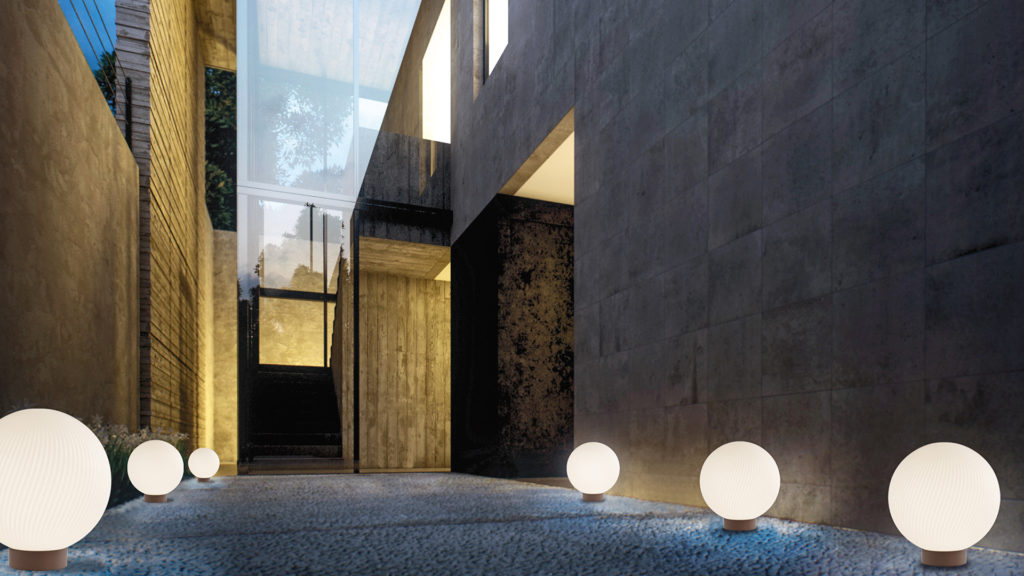
How could you describe your design?
There are some characteristic elements of our way of doing design.
- We strongly believe in the “form enhances function”, which is a way of linking shape to function, but without ever forgetting a certain poetic, a certain polite sensuality, which gives even more emotional value to the function that is expressed.
- We love smooth and simple shapes and obsessively care about the proportions that bind and connect them.
- We try to use the materials with a lot of authenticity, avoiding to imitate them with textures and decorations: every material has some peculiarities and we try to respect and enhance them project by project.
- Having the opportunity to work in dozens of different sectors, with very heterogeneous companies, we believe in the power of contamination and let our design be enriched by these seemingly distant connections.
All these values are manifestations of the intense desire to create innovative, but above all extremely long-lasting objects.
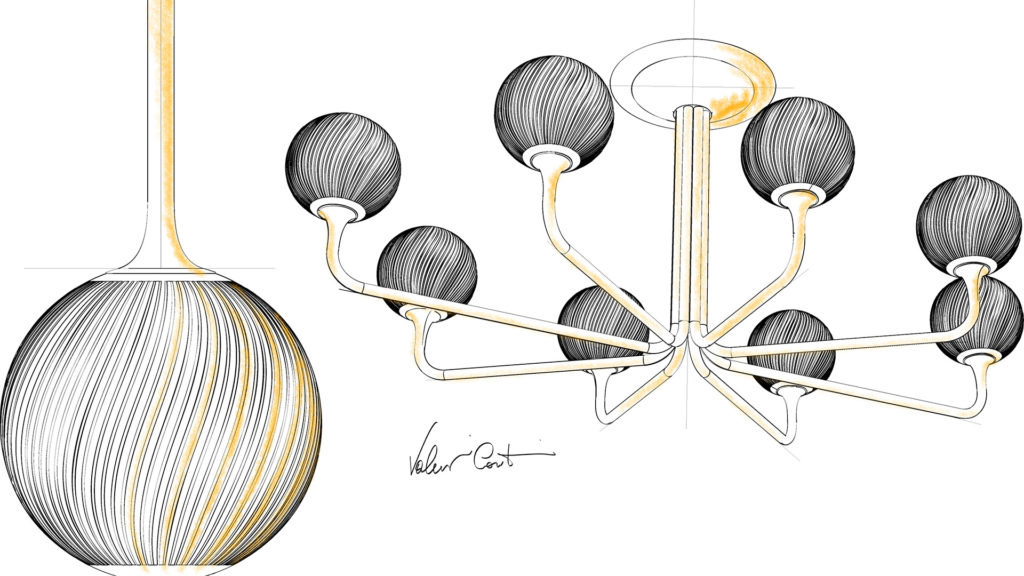
In your opinion, which are the basic characters needed for a new product?
Despite the extreme variety of sectors and types of projects on which we work there are some essential cornerstones for the success of a new product.
- Having a strong idea in mind: weak ideas hardly improve during project development.
- Have a lot of respect for the customer type of the customer.
- Be very familiar with the materials and technologies used for the birth of a given product: only in this way you are able to accompany the project from intuition to rendering to industrial product.
- Create an intense dialogue with the client.
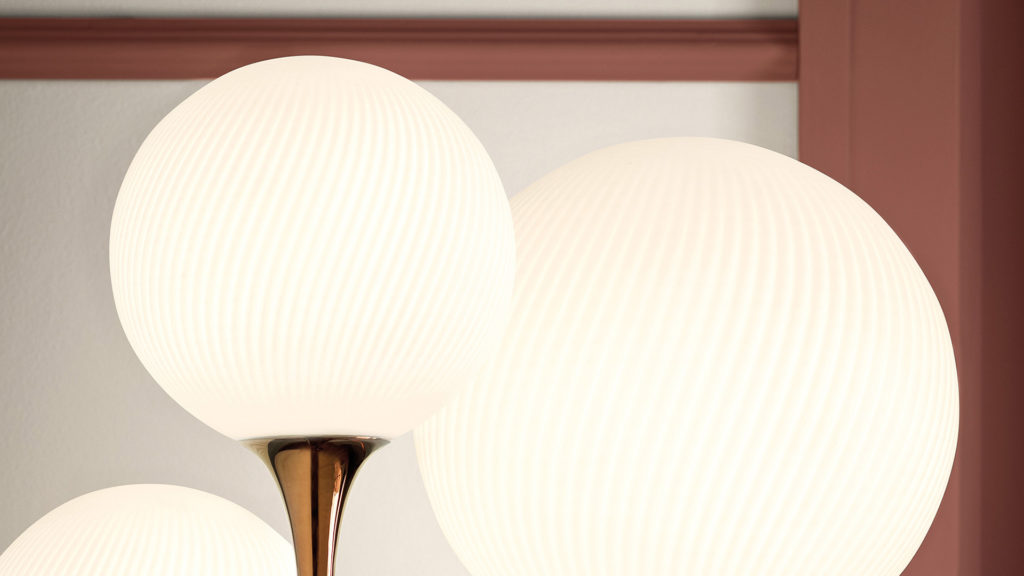
It is not easy to design a lighting concept that works well both indoors and outdoors. What were the key points of this development?
It’s true, it’s a rather unusual result that I hope rewards the project.
I have the feeling that we have found the right balance between formal cleanliness and decorative expressiveness, making TEE lamps really suitable for a multitude of uses, moods, spaces and environments.
We have pursued a correct and balanced luminous behaviour and also this aspect will prove to be a winner both inside and outside. I must confess that I really like the idea of being inside a living space, admiring an illuminating body a few steps from me and seeing one belonging to the same family located in the garden, outside: the thought alone gives me the feeling of an architectural project in which inside and outside are in balance, in continuity and the use of lamps belonging to the same family, like a parure, could only strengthen this feeling.
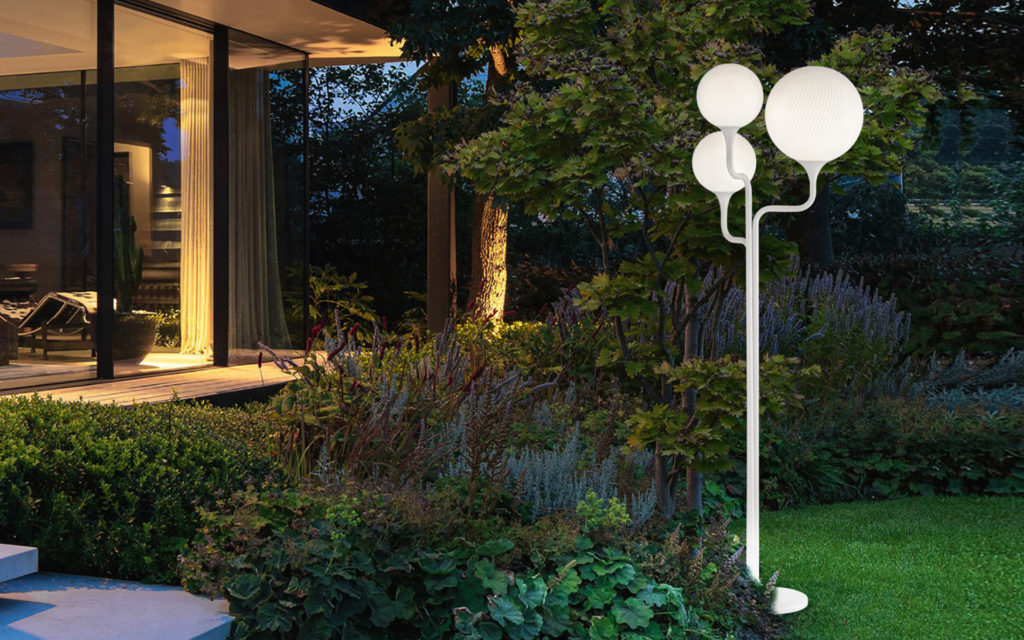
How does the indoor version differ from the outdoor version?
Deliberately there are no differences in shape, precisely because I wanted to reinforce a unique and coherent message between the interior and the exterior of a living space. The differences are mainly in the materials, polymer in the diffusers for the exterior and precious glass for the interior and then in the palette of finishes, declined to better enhance the dialogue with the context.
Author of the article
Alessia D’Alesio
Global Marketing & Communication Manager
